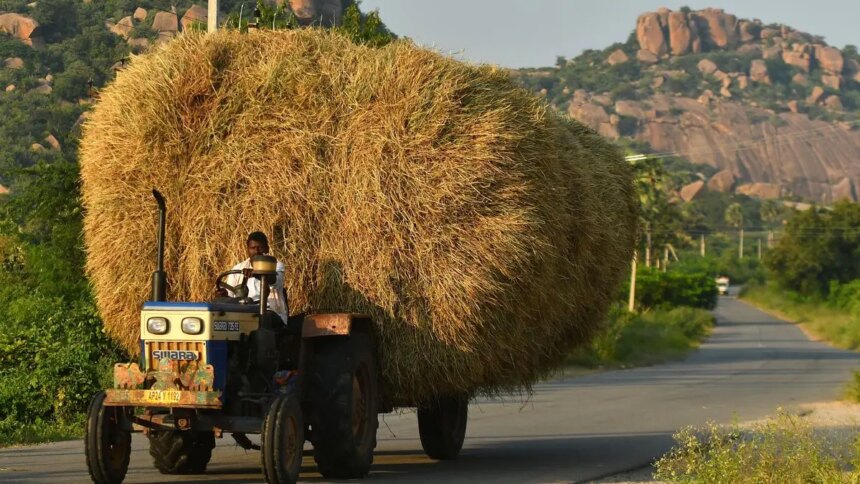
Fodder: Seed crisis
| Photo Credit:
NAGARA GOPAL
India’s adequacy in food production has largely been attributed to the development of improved seeds for different crops, particularly wheat and rice, their transfer to farmers, and efficient coordination between state development departments and appropriate government policies. However, when it comes to the fodder seed sector, India still lags behind in meeting its domestic demand.
The production of quality fodder seeds has steadily declined, from approximately 514 tonnes in 2015-16 to just 270 tonnes in 2023-24, with only a few years showing slight improvements. The seed replacement rate (SRR) — the percentage of land sown with certified or quality seeds, excluding farm-saved seeds — remains alarmingly low, under 20 per cent in the fodder sector.
This decline is primarily due to two factors: the biological challenges of the crops themselves and issues within the seed supply chain. The biology of forage crops makes seed production difficult because of irregular flowering, long blooming periods, and a reliance on cross-pollination, all of which make it hard to produce uniform seeds.
Additionally, the seeds are small and fragile, making them prone to damage during harvest. The genetic diversity of these crops further complicates maintaining pure seed lines, as cross-pollination can lead to contamination and reduced purity. Problems in the seed supply chain include limited involvement from production organizations and ineffective marketing strategies.
Regional variations
Though, the country has made significant progress in reducing the green fodder deficit, from approximately 24 per cent in 2010 to 11 per cent today; substantial regional and seasonal variations in fodder availability persist. The situation remains particularly concerning in the eastern and southern regions, with the green fodder deficit reaching as high as 68 per cent in Jharkhand and 63 per cent in Andhra Pradesh. The total estimated deficit in the Union Territories is around 76 per cent.
A well-coordinated fodder seed hub can address challenges in fodder seed production to a large extent by centralising production, processing, and distribution, while promoting collaboration among farmers, research institutions and other key stakeholders. The seed hub has proven to be a vehicle for faster seed replacement, especially in pulses and oilseeds.
Jhansi-based Indian Grassland and Fodder Research Institute can serve as the central node of the hub, with Self-Help Groups (SHGs), farmers, NGOs, and research institutions as key stakeholders.
Engaging with farmers
Another key component that needs attention is engaging farmers directly in the process of seed production, including the selection of high-quality fodder varieties, and integrating them into a buy-back guarantee scheme. This buy-back system ensures that the seeds produced by farmers will be purchased at a fair price. Furthermore, developing a strong seed market is crucial to the success of this model.
Strengthening public-private partnerships (PPPs) in fodder seed production can significantly enhance the sector. It is important to note that over 500 seed companies are engaged in the seed business, but only 15-20 private players are actively involved in the forage sector.
Introducing Minimum Support Prices (MSP) for fodder seeds in key crops such as berseem and lucerne would be a significant step forward. With MSP in place, farmers would be encouraged to invest in fodder seed production, knowing they will receive fair compensation even if market prices fluctuate. This approach would also substantially reduce India’s reliance on imported fodder seeds, particularly berseem. Over the past decade, India has imported an average of around 9,000 tonnes of berseem seeds annually, at a cost of approximately ₹109.2 crore each year.
Finally, the strengthening of the seed chain is essential to ensure the smooth flow of quality fodder seeds from production to end-users. This requires developing a more efficient infrastructure, including seed processing units, storage facilities, and distribution networks.
Choudhary is Scientist, Singh is Head of Seed Technology division at ICAR-IGFRI, Jhansi, and Kaushal is Director of the institute. Views are personal
Published on April 21, 2025









